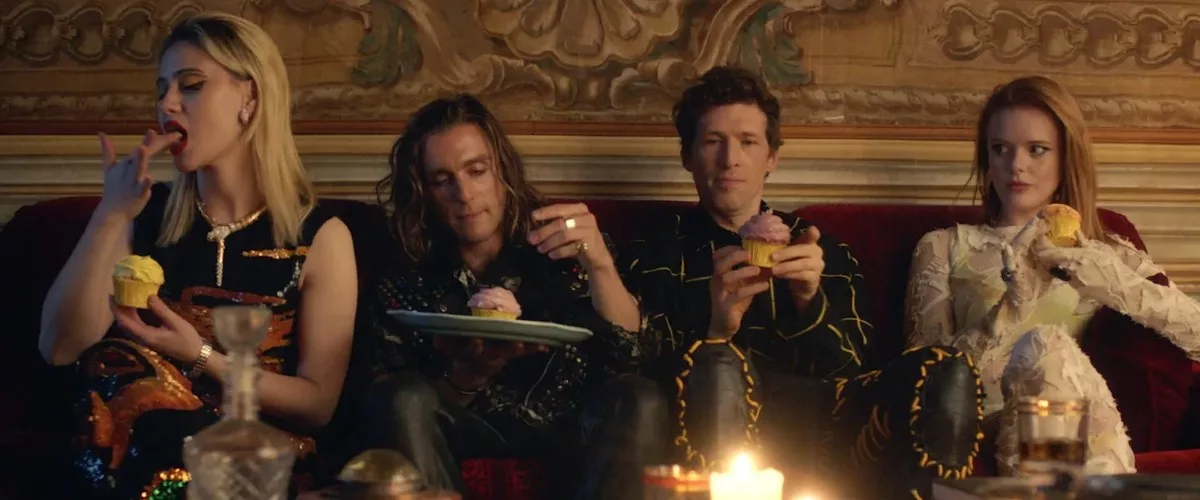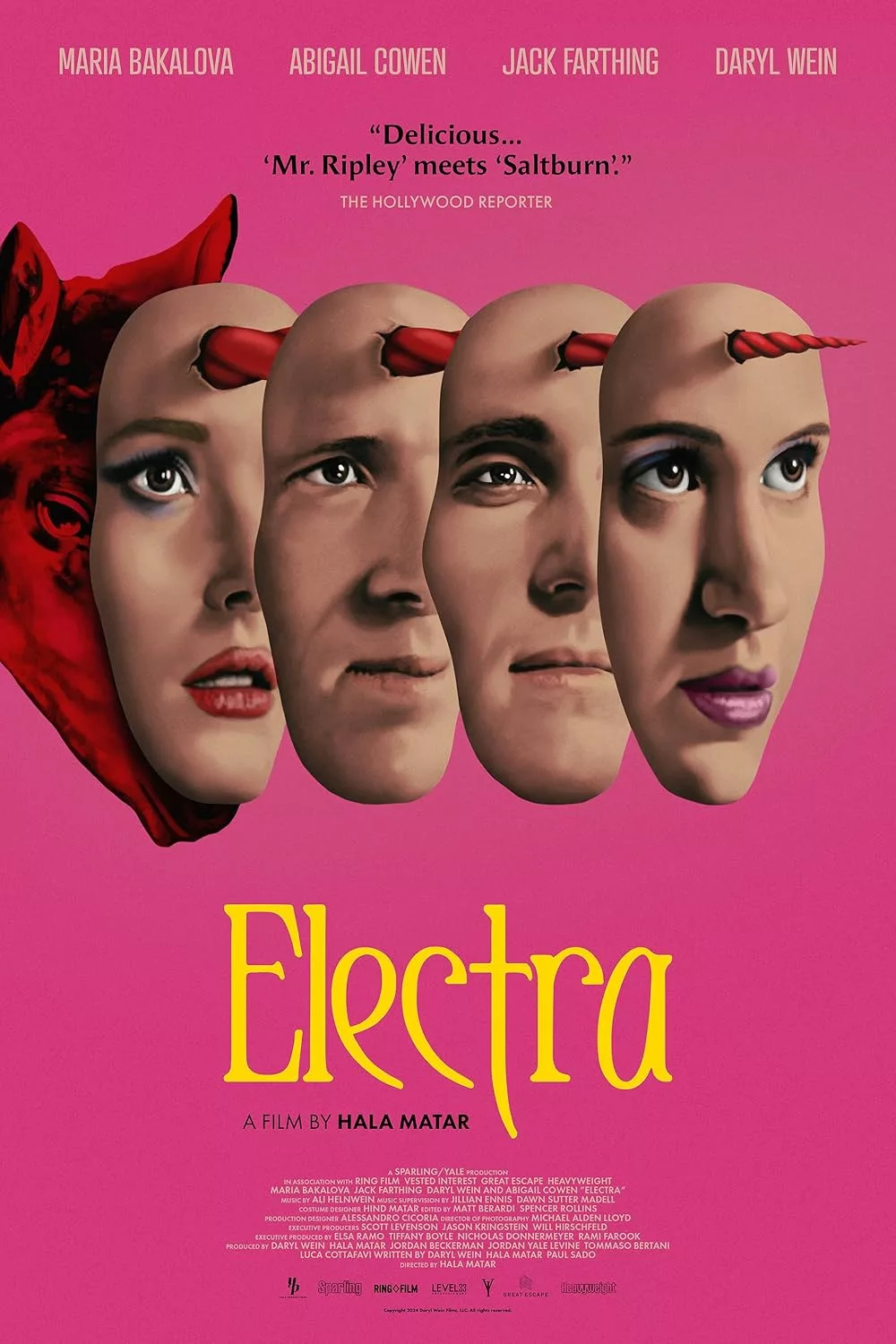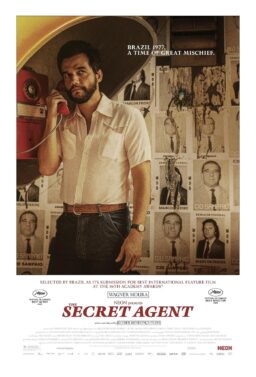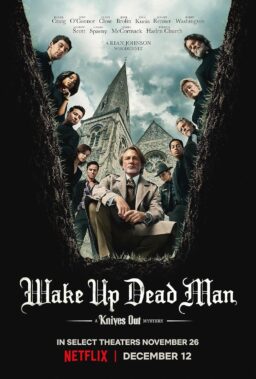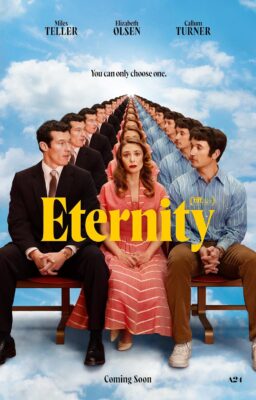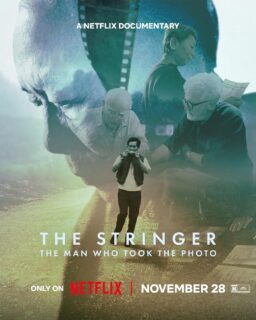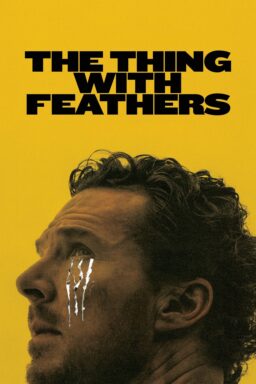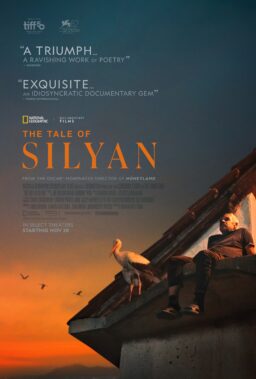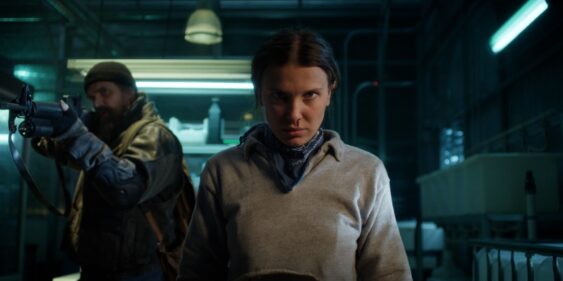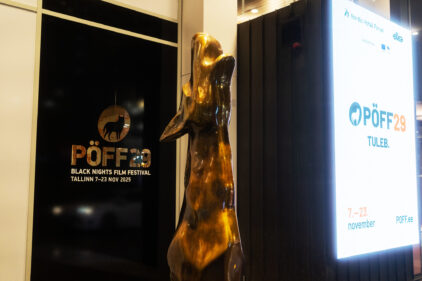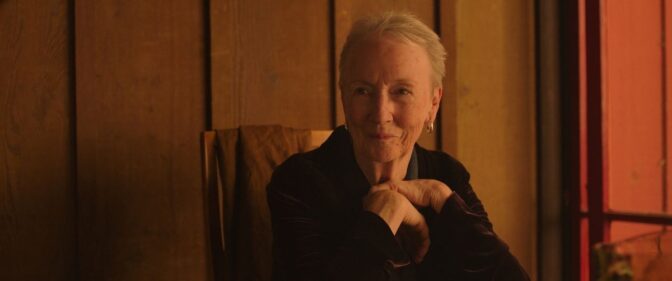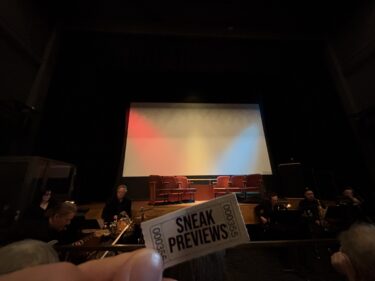“There’s no me. There’s two of me and they cancel each other out.”
One of the four central characters in “Electra” says this, but the line is true for each of them. Everyone is wearing a mask. Nobody is who they seem. Hala Matar, in her impressive directorial debut, has a lot of fun playing with ideas of identity, mirroring, and doubling, and her sense of fun elevates what could be derivative into something fresh and original. “Electra”‘s subject matter is heavy (the title should clue you in), and the emotions are very dark. Still, the film itself shimmers with a kind of free-floating hilarity, and the team’s sense of creativity and pleasure is catching.
“Electra” takes place at a scene-stealing Italian palazzo, where the rooms are cavernous with echoes and filled with beautiful artifacts, and the Renaissance-era murals on the ceilings look down on the action far below. Matar and her cinematographer, Michael Alden Lloyd, along with production designer Alessandro Cicoria, find endlessly inventive ways to revel in the different spaces, turning the palazzo into an intricate stage set where all these intersecting dramas of identity and masking play out. Matar and her co-writer Daryl Wein fell in love with the palazzo during a trip to Italy, and they wrote the script (with Paul Sado) based on the location. The plot is deceptively simple. Once reality is established, it immediately starts unraveling.
Journalist Dylan (Wein) and his photographer girlfriend Lucy (Abigail Cowen) are in Italy on a magazine assignment to interview rock star Milo (Jack Farthing), holed up in a palazzo with his performance-artist girlfriend Francesca (Maria Bakalova). “Life is performance,” says Francesca. Milo would agree. Dylan and Lucy seem more straight-forward, but “seem” is the operative word. Dylan and Lucy aren’t exactly on the level. Milo and Francesca are transparent, by comparison.
Milo is seductive and controlling, lolling about in stunning clothes, and side-stepping Dylan’s fairly straightforward questions in a grandiose manner: “How long have you two been together?” “I have no concept of time or space.” Francesca and Milo have an open relationship and, while Francesca claims it works, she is bored and unsatisfied. Milo’s freedom in self-presentation, his disregard for social norms, creates a force-field of energy around him. Both Dylan and Lucy fall under its spell. Nobody can keep their bearings.
Matar comes to the table with a clear love of cinema and also a sense of play. Federico Fellini’s films are a clear influence, and I flashed on Nicolas Roeg’s haunting “Performance” a couple of times, watching these four gorgeous charismatic people morph in and out of their self-defined “roles.” Patricia Highsmith’s Tom Ripley novels also have a clear influence. Tom Ripley, famously, is an American in Europe, a “nobody” who slides his way into the lives of the opulently rich, wrecking them before they even know what’s happened. Tom Ripley is a forger, not just of signatures and art pieces, but of personality and identity, shedding them when they cease being advantageous. Highsmith was obsessed with forgery, and Matar is, too. (In one scene in “Electra”, Lucy stands on the massive table in the dining room and recites Titania’s famous “forgeries of jealousy” monologue from A Midsummer Night’s Dream.)
The gift Matar brings to the table is her playful sense of invention. She could have gotten bogged down in seriousness (or, worse, self-seriousness), gravitating towards the “Death in Venice“-“Comfort of Strangers” vibe in the story. Instead, she plays around with format and structure, breaking things up into chapters, creating multiple levels of distance, and creating opportunities for humor. One wacky dinner scene takes place entirely in pantomime, the characters fake eating and drinking, with subtitles added, and sound effects, giving the impression that the four characters are communicating via ESP. It’s very funny!
Hind Matar’s costumes are almost otherworldly in their beauty, and as the film progresses, the clothes become less and less connected to reality. Everything is a costume. Dylan sneaks into Milo’s and Francesca’s room and tries on Milo’s black and gold striped lounging jacket, checking himself out in the mirror. Nearly all Ripley adaptations feature such a scene, most strikingly in “Purple Noon,” when Alain Delon, dressed in his friend’s clothes, rapturously kisses his mirrored reflection. Lucy’s identity seems more stable than Dylan’s, but in one scene, she and Francesca dress up in spangled gowns and colored wigs, mirroring each other’s gestures as they dance. Will this be a “persona-swap” movie, with Dylan and Lucy co-opting Milo and Francesca’s identities, or is something even more calculating at work?
“What are they looking at?” Milo says of his legions of fans. “Me or their image of me?”
The fun of “Electra” is in Matar’s non-literal and spirited exploration of that idea. It’s exciting to consider what Matar will do next.

